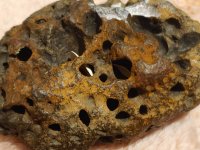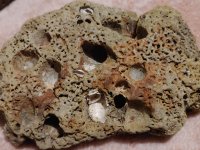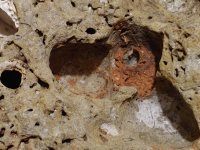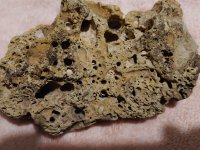You are using an out of date browser. It may not display this or other websites correctly.
You should upgrade or use an alternative browser.
You should upgrade or use an alternative browser.
What have I discovered
- Thread starter Gypsy89
- Start date
- May 28, 2010
- 19,421
- 30,102
- 🥇 Banner finds
- 1
- 🏆 Honorable Mentions:
- 1
- Detector(s) used
- Nokta Makro Legend// Pulsedive// Minelab GPZ 7000// Vanquish 540// Minelab Pro Find 35// Dune Kraken Sandscoop// Grave Digger Tools Tombstone shovel & Sidekick digger// Bunk's Hermit Pick
- Primary Interest:
- Metal Detecting
That is genuine basalt! Congratulations, and welcome to the forum!
DetecTom
Full Member
- Nov 18, 2019
- 107
- 122
- Detector(s) used
- Minelab Equinox 600|Whites IDX Pro
- Primary Interest:
- Metal Detecting
Basalt is cool and looks like some kind of moon rock. Although, volcanic rock is cool in itself.
EQ8
Sr. Member
- Feb 1, 2020
- 284
- 352
- Detector(s) used
-
Equinox 800
Garrett Carrot
- Primary Interest:
- All Treasure Hunting
Petrified sponge maybe? 

Red-Coat
Gold Member
I don’t think that's basalt (or volcanic). I don't see any evidence of petrology consistent with igneous formation. The size and geometry of the holes are also not consistent with them being vesicles. I think that's a chunk of 'tufa', which is a type of highly porous limestone within which the cavities are formed by erosion and/or have arisen from the presence of gastropod and mollusc activity. It frequently contains residual shells and shell fragments.
Sedimentary tufa is frequently confused with the ‘similarly’ named ‘tuff’, which can have a similar superficial appearance and may also contain shell debris. Tuff has a volcanic origin but can in a sense also be regarded as sedimentary since it is often formed from compacted depositions of volcanic ash/ejecta. The petrology of tuff can also be basaltic (as opposed to rhyolitic, andesitic etc) but, if so, it’s usually a very dark rock: black, dark green or red and almost always contains visible phenocrysts or glassy inclusions.
Based on the nature of the cavities and the absence of any visible phenocrysts etc, I would go with tufa rather than tuff. An acid test would tell you for sure if the rock has a carbonate matrix rather than a silicate matrix but you would need to test a virgin surface. The cavities in weathered tuffs frequently have secondary deposits of other minerals such as calcite.
Sedimentary tufa is frequently confused with the ‘similarly’ named ‘tuff’, which can have a similar superficial appearance and may also contain shell debris. Tuff has a volcanic origin but can in a sense also be regarded as sedimentary since it is often formed from compacted depositions of volcanic ash/ejecta. The petrology of tuff can also be basaltic (as opposed to rhyolitic, andesitic etc) but, if so, it’s usually a very dark rock: black, dark green or red and almost always contains visible phenocrysts or glassy inclusions.
Based on the nature of the cavities and the absence of any visible phenocrysts etc, I would go with tufa rather than tuff. An acid test would tell you for sure if the rock has a carbonate matrix rather than a silicate matrix but you would need to test a virgin surface. The cavities in weathered tuffs frequently have secondary deposits of other minerals such as calcite.
Last edited:
Top Member Reactions
-
 2404
2404 -
 1116
1116 -
 1111
1111 -
 901
901 -
 819
819 -
 807
807 -
 764
764 -
 733
733 -
 644
644 -
 518
518 -
 476
476 -
 468
468 -
 459
459 -
 429
429 -
 414
414 -
 408
408 -
O
369
-
 362
362 -
 353
353 -
 348
348
Users who are viewing this thread
Total: 2 (members: 0, guests: 2)
Latest Discussions
-
Recent finds - Large Cents, Jaw Harp, Cufflink, Buckle and Buttons
- Latest: detectorcowboy
-
-
-
-









